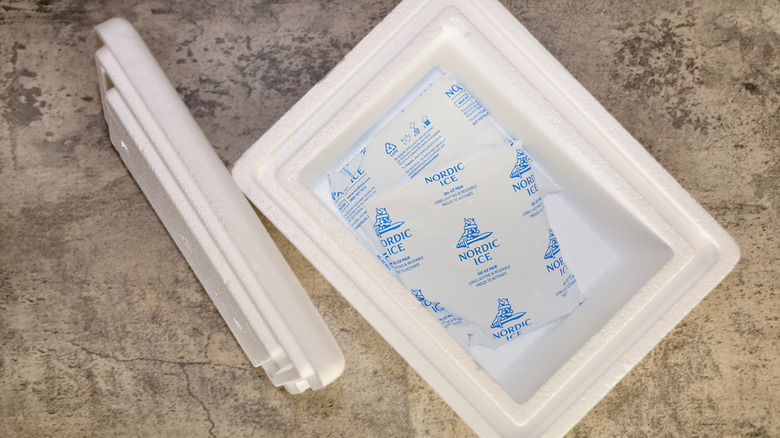Beat The Heat On A Budget With A Simple Air Conditioner DIY
We may receive a commission on purchases made from links.
Whether your air conditioner is broken or just not cutting it during the summer, you should not have to suffer the heat indoors, especially if the indoor temperature falls outside of the typical safety zone. While the temperature that can make a home unsafe for some individuals varies, if there are infants, elderly people, or people with chronic illnesses in the home, the temperature should be below 74 degrees Fahrenheit. If your air conditioner, covered windows, artfully placed fans, and other easy solutions that can help reduce heat in your home without blasting the AC are not keeping you cool enough, you might need to resort to DIY options to cool down, such as creating your own air conditioner unit using a fan and ice. The result of this DIY project is sometimes called a swamp cooler or evaporative cooler, and it is a great way to get more cool air blowing around your space.
Swamp coolers work by blowing hot air over cold water and ice to cool it and circulate it around the home. A DIY option involves using a table fan that directs air into a large bucket or bin that is filled with ice and cold water. The bin will also have one or more exit points so that once the air that is forced inside is cooled, it can escape the bin in give you some relief from the heat. To make one, you will need a bucket or bin with a lid, a table fan, a cutting tool, lots of ice, cold water, and possibly some pipes or tubes to direct your cold air.
How to create a DIY swamp cooler
You can apply the general idea of the swamp cooler using any materials you have around your home, but you can also buy all of the materials for a relatively affordable price. Large, 20-gallon storage bins with lids can be purchased for under $10, and high-quality table fans like the Honeywell HT 904 TurboForce Tabletop Fan can be bought on Amazon for about $15. If you are unsure about purchasing a new fan, keep in mind that the fan can be disconnected and used regularly when you do not want to use your swamp cooler. Finally, you may want to buy a couple of bags of ice rather than trying to make your own. A 7-pound bag of ice can be purchased for as little as $2, so you can buy multiple and store them in your freezer to replace the ice in your swamp cooler as needed. Finally, you may want some PVC pipe elbows to direct the cold air. These pieces range in price from a few dollars to less than a dollar, depending on the size you want.
Once you have all of your supplies, you can create your DIY swamp cooler. Start by laying out your drain pipes and fan on the lid of your container to trace them. Carefully use a utility knife to cut out holes. Pour your bags of ice into the bottom of the bin. Then, insert the drain pipes and place the fan facedown on the lid before putting the lid in place on the bin. Plug in your fan, turn it on, and enjoy the refreshing air.
How to optimize the effectiveness of your DIY swamp cooler
To get the best results from your DIY swamp cooler, you should focus on upgrading the project so that it has more longevity. If you are looking for ways to repurpose your old cooler, then you could complete the DIY project using one of these as a base instead of a bin to improve the insulation. A plastic, double lined cooler might be too difficult to cut through, however, so it's best to stick with styrofoam styles.
Whichever vessel you choose, you should also start by filling the container as much as possible. When there is less air space, the ice will melt more slowly. Additionally, large blocks of ice will last longer than small pieces. While your initial pieces of ice slowly melt in the cooler, freeze water in plastic bags to create larger ice blocks that you can add to the mix over time. Another way to keep your cooler working longer is to avoid lifting the lid of the bin. Adding salt into your bin to lower the temperature of the ice water and wrapping the bin in a damp towel, which will cool the air around it as the water evaporates, are two final tips to keep your DIY air conditioner working effectively.
While a single DIY air conditioner may not bring your whole home down to the same level as the ideal thermostat settings to stay cool during a heatwave, it should help you stay safe. As a bonus, running a tabletop fan requires far less energy than running a normal air conditioner, so your swamp cooler shouldn't have a massive impact on your energy bill.

